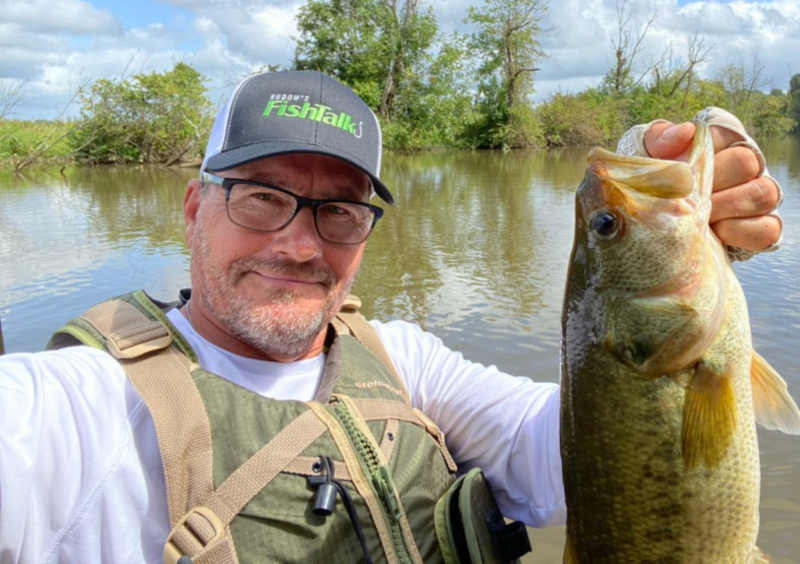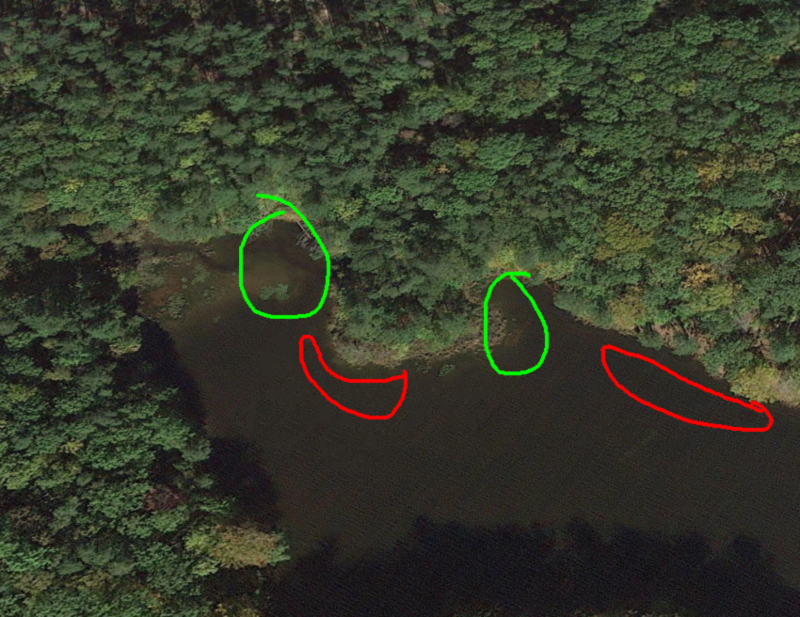In the spring many anglers have their eyes set on fishing for striped bass, shad, and other early season bites, but there is a very rewarding method of fishing that’s often overlooked by anglers distracted by tidal water opportunities. Bed fishing for largemouth bass provides you with an underrated and very rewarding sight-fishing experience. Dangling a lure in a bass’s face for what seems like an eternity until its parental instincts kick in and it brutally attacks your bait is a feeling like no other.

Once water temps hit 55 to 65 degrees, bass move up into the shallows to create the next generation. They typically spawn in shallow water of just a foot or two on sand and gravel-covered bottoms, and prefer to spawn near vegetation and structure. Once a male and female pair up, they will swim around together searching for a spot to make their bed. The female bass will create the bed, which is easy to spot and looks like a one- to two-foot diameter crater on the bottom. Then, she deposits her eggs. The male will fertilize the eggs and take over the responsibility of protecting them. The male bass will not leave the bed and chases off anything that tries to make a snack out of his offspring.

Triggering Bites from Bass on Beds
During the spawn, a bass’s worst enemy is the bluegill. They will sit and wait for an opportunity to slurp the eggs right up. Hence, the largemouth bass’s defensive nature. The objective of bed fishing is simple: make the fish think that your lure is a threat to its eggs. The key is to drag the lure right across the bed until you hit the sweet spot and get a reaction.
Typically, all the eggs will be located in a small area just inches across. Once you pinpoint this area, repeatedly drag your bait over it until the bass gets fired up enough to inhale it. Sometimes the fish will move a lure off the bed by nudging it with its nose or kicking with its tail as opposed to grabbing it in its jaws, and you’ll have to cast to the same fish repeatedly before it attacks. This is no easy task and requires patience, a good pair of polarized sunglasses, and lots of accuracy. It often takes dozens of casts and more often than not the bass won’t even commit.
Gearing Up for Bedded Bass
For bed fishing, a bait caster is the best tool for the job. A spinning setup will work but can’t deliver as much accuracy. When it comes to lure color there are two approaches. The first is to use white or bright colored baits which are easy for you to see; an important factor, as you have to bring the lure right across the sweet spot to trigger attacks. The second is to use natural patterns to mimic bluegill. Try starting out with natural patterns such as green pumpkin and bluegill colors, and if that is not getting on the fish’s nerves or you have difficulty seeing where the lure is, try a solid white bait that will stand out and bring it across different parts of the bed until you trigger a reaction from the fish.
As far as lure shape and size, anything that mimics something trying to eat the eggs will work. Top picks include soft plastic swimbaits, Texas-rigged creature baits (use a bullet weight to maintain bottom contact), Ned rigs, finesse jigs, tubes, or really any baits with appendages that will draw attention. Keep in mind how exposed the hook is since they will often times just bump your bait to try and scare it off. Upgrade your hook size if fishing a Texas rig, and stay away from baits with long tails like lizards, because the fish may try to drag it off the bed by grabbing just the tail and may never take the hook into its mouth.
Bed fishing allows you to spot the fish, attempt to trigger a bite, and enjoy a serious fight, but remember that these bass are spawning. Handle the fish gently and try and get them back into the water ASAP, so they can protect their fry — snap a quick photo and send that fish back to fulfill its duty.
-By Ian Rubin